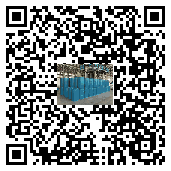Decoding UV Viscosity-Reducing Dispersants: The "Invisible Engineers" of the Photocuring Era
In digital printing precision printheads, on the leveling mirrors of automotive coatings, and in the temporary
fixturing of semiconductor wafers, a specialized additive called "UV Viscosity-Reducing Dispersants" is quietly
reshaping the efficiency and quality of industrial manufacturing. Like a molecular-level "invisible engineer," they
manipulate the interaction between pigments and resins, enabling photocuring systems to break through viscosity
constraints and transition from the laboratory to the production line.
I. Viscosity Dilemma: The "Achilles' Heel" of Photocuring Systems
UV photocuring technology, with its instantaneous cure and zero VOC emissions, has become a core process in the
3C electronics, packaging printing, and high-end coating industries. However, the ever-present challenge of
pigment-resin compatibility is:
Pigment Agglomeration: Organic pigments (such as phthalocyanine blue) or inorganic fillers (such as fumed silica) easily
form nanoscale aggregates in resins, causing the system viscosity to soar to over 10,000 mPa·s.
Uncontrolled thixotropy: Pigment aggregates form a three-dimensional network, resulting in abnormal "shear thinning"
rheological properties. This can lead to inkjet clogging and poor leveling during roller coating.
Storage stability crisis: After 24 hours of stagnant standing, pigment particles settle due to gravity, forming a hard
precipitate, which can cause defects such as craters and color shift in the coating.
II. Viscosity Reduction Magic: Molecular-Level "Spatial Isolation"
Modern UV viscosity-reducing dispersants utilize controlled free radical polymerization (CFPP) technology. Their molecular
structure features a precise two-stage "anchor group-solvation chain" design:
Anchor groups: These contain highly polar groups such as pyridine rings, carboxylic anhydrides, or phosphate esters,
which specifically adsorb to the pigment surface, forming a monolayer coating. For example, for iron oxide pigments,
carboxylic acid groups can form coordination bonds with Fe₃⁺, resulting in an adsorption energy of -50 kJ/mol.
Solvation chains:
These are long polyester or polyurethane chains (molecular weight 8,000-12,000), forming a steric barrier within the resin.
When two solvated chains approach, van der Waals forces cause chain repulsion, extending the effective collision distance
between pigment particles from the nanometer scale to the micrometer scale.
This structure creates a three-layer protective layer on the pigment particle surface:
Inner layer: Chemical bonding layer (e.g., carboxylic acid-Fe³⁺ coordination);
Middle layer: Electrostatic repulsion layer (adsorbed dispersant ions give the particles a -45mV zeta potential);
Outer layer: Steric hindrance layer (solvated chain extension length 8-12nm);
Experimental data show that after adding the dispersant, the pigment particle size distribution (D90) decreases from
1.2μm to 0.8μm, the system viscosity decreases by 75%, and there is no coarsening after 14 days of heat storage at 85°C.
III. Industrial Applications: Transitioning from the Laboratory to the Production Line
1. Digital Inkjet: Breaking the "High Viscosity-High Precision" Dilemma
In UV inkjet printing, dispersants must simultaneously address three major challenges:
Balancing high pigment content (25%-30%) with low viscosity (<3,000 mPa·s);
Matching instant curing (<0.1 seconds) with leveling;
Interfacial compatibility during multi-color overprinting
2. 3C Electronics Coatings: Spatial Arrangement of Nanoscale Fillers
In UV coatings for smartphone glass cover panels, dispersants must achieve:
Stable dispersion of nano-titanium dioxide (particle size 20-50 nm);
Synchronizing coating hardness ≥6H and transmittance ≥90%;
Fingerprint resistance (contact angle >110°);
Systems using specific dispersants exhibited no precipitation after 48 hours at 2,000 rpm, achieving a coating
transmittance of 92%, an 8 percentage point improvement over conventional systems, and an increase in pencil
hardness from 5H to 6H.
3. Semiconductor Manufacturing: "Destructive-Free Peeling" for Wafer Dicing
In the temporary wafer bonding process, dispersant-derived UV adhesive technology has achieved a revolutionary
breakthrough:
Initial Curing: After 365nm UV irradiation, the adhesive layer crosslink density reaches 98%, with peel force
fluctuation of <3%.
Photo-Detachment: After 254nm UV irradiation, the adhesive layer's cohesive strength decreases by 90%, enabling
residue-free peeling.
Compatibility: Perfectly compatible with a variety of light sources, from traditional high-pressure mercury lamps
to LEDs.
This technology has been applied in 12-inch wafer thinning processes, reducing chip breakage rates from 0.5% to
0.02% and lowering single-wafer processing costs by 30%.
IV. Future Outlook: The Integration of Nanotechnology and AI
With the advancement of precision manufacturing technologies such as nanoimprint lithography and atomic layer
deposition (ALD), dispersants are evolving towards "monolayer precision coating." AI-assisted molecular design
platforms can complete the entire development process, from group screening to performance prediction, within
72 hours, achieving a 20-fold increase in efficiency compared to traditional trial-and-error methods.
In this silent revolution in materials science, UV viscosity-reducing dispersants have emerged from the shadows,
becoming a crucial bridge connecting basic research and industrial applications. As we swipe on our phones, as
cars gleam metallically in the sun, and as pharmaceutical packaging maintains its flawless print, these invisible
molecular guardians silently safeguard the quality cornerstones of modern industry. With molecular-level wisdom,
they embody the scientific truth of "small molecules, big impact."


